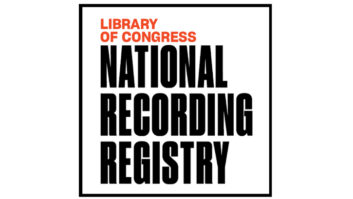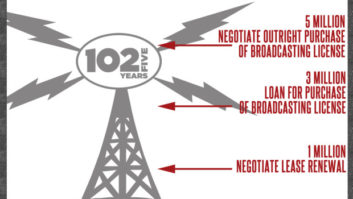
President Barack Obama talks with former Presidents George W. Bush and Bill Clinton in the Oval Office in January. No president has issued a national alert via EAS, EBS or Conelrad. ©Pete Souza/www.whitehouse.gov
In an era of instant access to thousands of mass media and personal channels, one might wonder if the concept of a Cold War-style presidential alert capability is outdated.
The Federal Communications Commission’s Emergency Alert System rules are intended to ensure that national activation would enable the president to communicate with the public within 10 minutes from anywhere. Can we doubt that should the president need to reach the public in a crisis, he could do so without activating such an alert?
However, the philosophy among emergency planners is the more channels, the better. Federal authorities believe the idea of national EAS remains relevant and are putting in place plans for an annual national test. It means possible changes for your station including a requirement to provide certain information to the commission.
The FCC issued a rules proposal in January. Highlights:
- • Although most of us are familiar with EAS in local weather situations, it is a national system that exists primarily to enable the president to issue warnings during emergencies. (Broadcasters are among the “EAS participants” required to take part in national EAS. State and local EAS participation is voluntary.)
But no president has issued such an alert; remarkably, the national capability has never even been tested systematically, even though FCC rules provide for regular testing at the state and local level (and a recent test of national EAS, limited to Alaska, is a good start). Would national alerting work if it had to?
- • The FCC, the Federal Emergency Management Agency, the National Weather Service and the Executive Office of the President have begun planning for the first national EAS test. The FCC is asking for comments on its proposed rule changes, which envision an annual test and certain reporting requirements.
- • Because of the structure of EAS, the FCC says, the system could be vulnerable to “single point of failure” problems in which failure of one station results in failure for all points below that station on the daisy chain. The FCC points to what happened in 2007 when FEMA tested a satellite warning system in Illinois; its contractors triggered a national-level alert that caused confusion until it was terminated not only by participant intervention but equipment failure. Authorities realized later that some EAS equipment “simply did not pass on the alert.”
Anecdotal evidence also suggests problems with state and local delivery architectures and the readiness of Primary Entry Point stations, the FCC says.
Further, EAS is administered “by multiple agencies at multiple levels,” which may cause operational problems or gaps in coverage. FEMA tests PEP stations but typically not others; the NWS tests National Weather Radio facilities but may focus only on their interaction with state and local alert architectures; and emergency operations facilities are tested by state officials. No entity is responsible for “top-to-bottom” national testing.
The FCC also acknowledged EAS criticism by the Government Accountability Office, which I wrote about in November. “GAO specifically cited lack of redundancy, gaps in coverage, a lack of testing and training and limitations on how alerts are disseminated to the public,” the commission noted.
- • Current rules focus on testing of components rather than the infrastructure as a whole, the FCC says. Also, data about EAS tests is limited; and any special testing typically is at the state or local levels and looks at specific situations such as child abductions that trigger AMBER Alerts.
- • While a next-generation EAS is in the works (spurred by FEMA’s adoption of Common Alerting Protocol as part of its Integrated Public Alert and Warnings System), there is no timetable for the replacement of existing EAS. The FCC thinks FEMA will rely on the EAS daisy chain structure for at least the early stages of IPAWS implementation. “The various states and localities also appear to be at different stages in their ability to adopt and utilize CAP-based EAS architecture.”
Thus a systematic national test remains important.
Reporting mechanism
The proposal on the table is for an annual test that will involve nationwide transmission of the Emergency Action Notification and associated messages and codes within the EAS. The FCC would require EAS participants to take part.
“Such tests will consist of the delivery by FEMA to [Primary Entry Point/National Primary] stations of a coded EAS message, including EAS header codes, Attention Signal, Test Script and EOM code.”
Stations would have two months’ notice that a national test was pending. The test would replace the required monthly test for that month. Participants would have to log results and submit them within 30 days; that information would be made public to help emergency planners learn.
Specifically, a station would be required to record and submit diagnostic information for each alert received from each message source monitored at the time of the national test. That includes whether it received the alert message; whether it retransmitted the alert; and, if it could not receive or transmit the alert, its best analysis of why.
Participants would also be asked to provide the date and time of receipt of the EAN message by all stations; the date and time of the initiation of the actual broadcast of the presidential message; who they were monitoring at the time of the test; the make and model number of the EAS equipment that they utilized; and other data. (The FCC language was unclear about whether this additional info would be required or optional.)
Tell the FCC
Is the proposed annual testing the best way to make sure EAS works nationally? Is an annual test necessary; is it sufficient? Is two months’ notice enough? These are questions the FCC is asking and on which it seeks comment. The commission also noted a technical concern. It said coder/decoder manufacturers “may have programmed their devices to receive and transmit EANs in different ways.” This may affect the ability of some devices to relay an EAN properly.
“In its 2008 Closed Circuit Test Report, the Primary Entry Point Administrative Council noted that many ENDECs process EAN messages by ignoring FIPS, i.e. location codes for national level messages, on the assumption that a national message is intended for the entire nation,” it stated.
“Accordingly, they transmit the message whether or not an EAN contains a FIPS code. At least one ENDEC manufacturer, however, has devices which require a FIPS code match. Thus in order to properly forward an EAN, the devices must receive a message that contains an appropriate FIPS code as authorized by commission rules.”
The commission asks whether this situation raises further problems and what it should do about them. For instance, should the FCC require that encoder/decoders relay an EAN message irrespective of FIPs code? Should it designate a national-level FIPS code?
I agree with the FCC that a properly functioning national EAS remains important and that this national testing regime is appropriate. The proposed rules appear to reflect input from broadcasters and do not appear to me to impose an undue additional burden on stations. But you may feel differently. Tell me at radioworld@nbmedia.com. And make your thoughts known to the commission; you can file a comment on its Web site. Refer to EB Docket No. 04-296.







